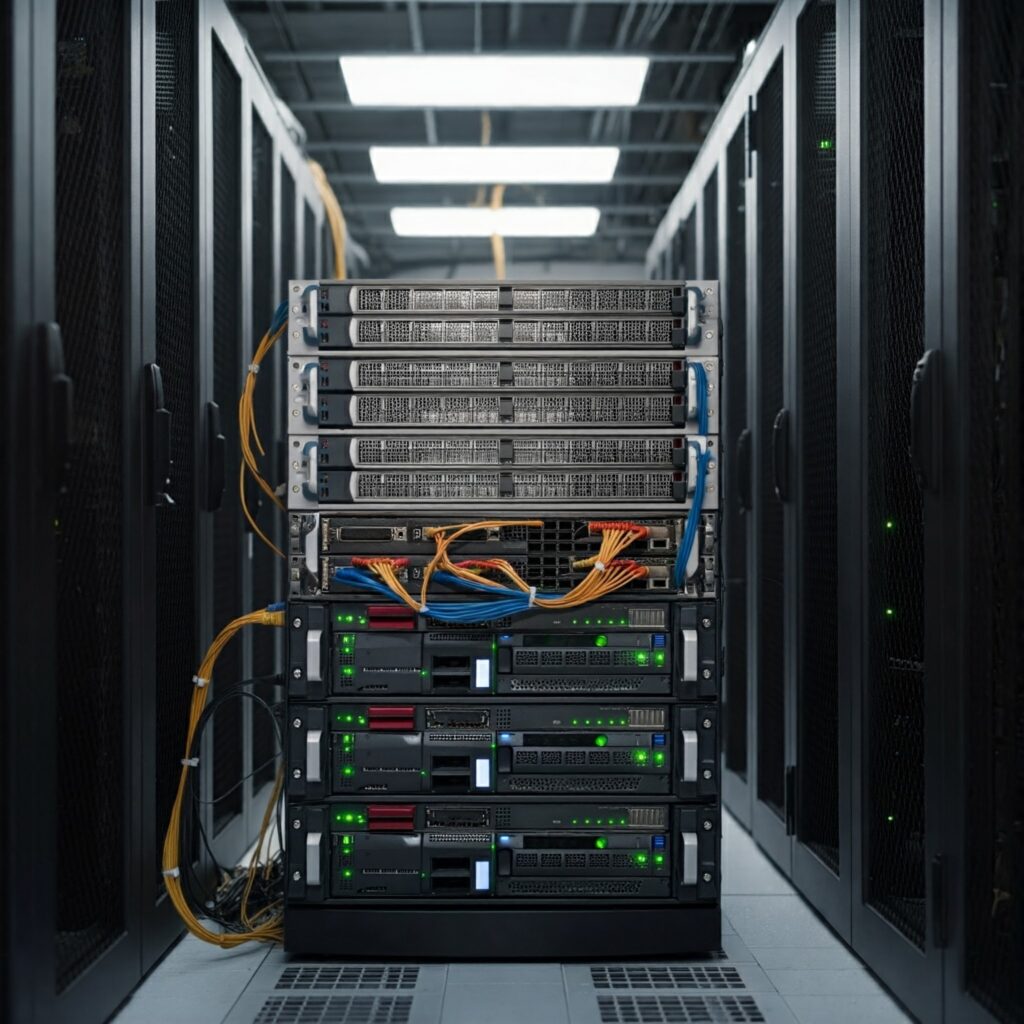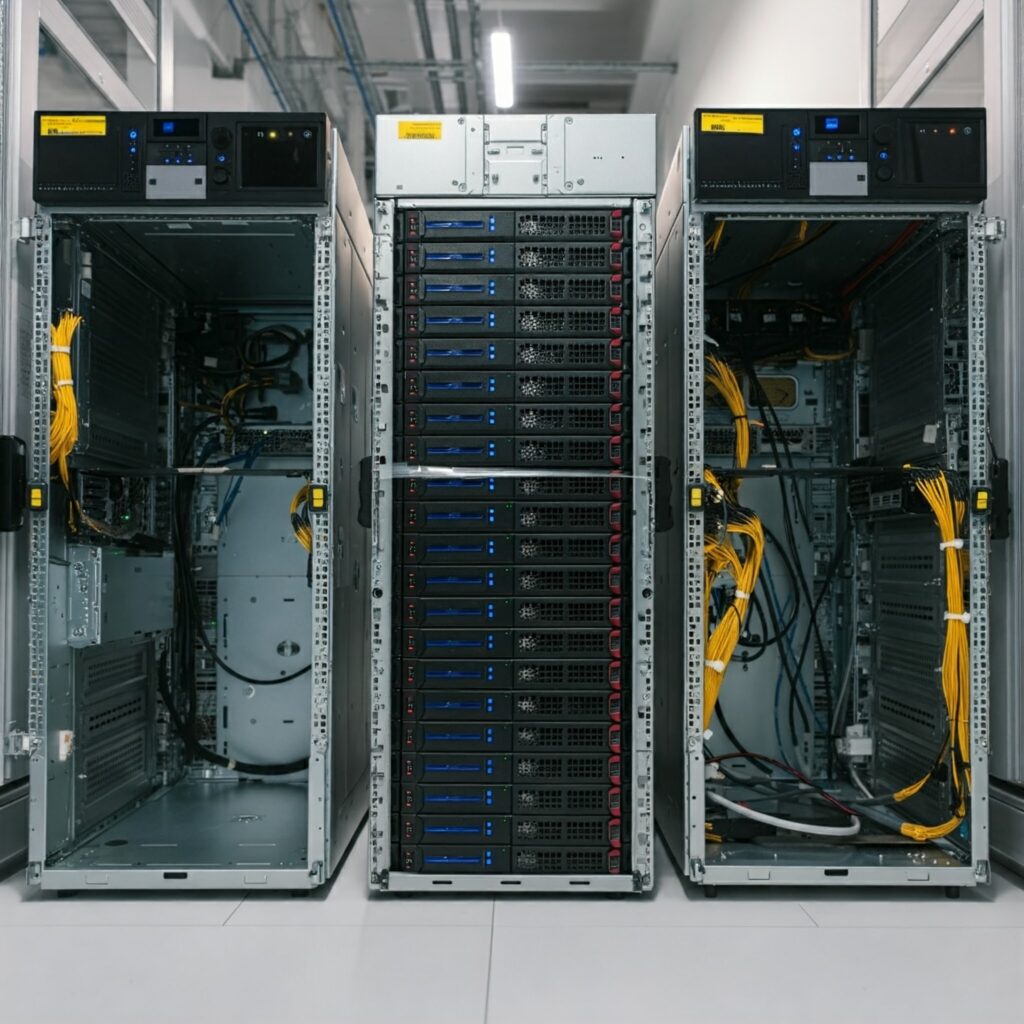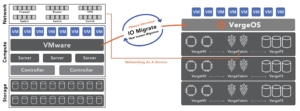Many organizations are searching for ways to eliminate server refreshes and stretch the lifespan of their IT infrastructure.—essentially replace only what’s necessary, when it’s necessary. A benefit of this approach is the reduction in e-waste.

Server refreshes are often seen as unavoidable, driven by technological advances that lead IT teams to replace aging servers with new models. Software companies force upgrades by decommissioning older servers even if they are still useful. VergeIO’s ioOptimize makes the elimination of server refreshes achievable. By balancing workloads across servers of different generations, ioOptimize enables organizations to keep older hardware running as long as it’s operational, integrating new servers gradually and avoiding disruptive, costly refreshes.
Extending the Life of Existing Servers
An obvious way to eliminate server refreshes is to extend the life of existing servers. Traditional infrastructure software often fails to effectively leverage older servers alongside new, more advanced hardware, turning aging machines into liabilities as they struggle to handle modern workloads. VergeOS’s efficiency and low overhead breathe new life into aging server hardware. With ioOptimize, these older servers can safely serve valuable roles within the infrastructure as long as they remain functional.
To help eliminate server refreshes, ioOptimize uses machine learning (ML) and narrow artificial intelligence (AI) to allocate workloads and resources across mixed-generation environments. By continuously monitoring each server’s health, capacity, and performance, ioOptimize ensures that even aging servers are utilized optimally without compromising stability. If an older server shows signs of potential failure, ioOptimize can migrate workloads to healthier servers, maintaining uptime without immediate replacements.
This approach enables companies to extend their hardware investments, deferring the need for new hardware until absolutely necessary, ultimately reducing costs and increasing return on investment.
Eliminate Server Refreshes by Balancing Workloads
Integrating powerful new servers into an environment with aging hardware can create workload-balancing challenges. Traditional virtualization and management software often struggle to distribute workloads across servers with varying performance capabilities effectively.
ioOptimize resolves this challenge by balancing workloads across servers, taking advantage of older and newer resources. ML algorithms within ioOptimize assess each server’s unique characteristics—such as processing power, storage capacity, and network speed—distributing tasks accordingly. This allows IT to eliminate server refreshes by assigning older servers to handle lighter workloads. In contrast, more demanding tasks are assigned to newer hardware, optimizing the efficiency of the entire infrastructure.
For a more detailed understanding of how ioOptimize enables seamless integration of aging hardware and newer servers, access VergeIO’s white paper on ioOptimize. This comprehensive guide explains how ioOptimize supports extended hardware lifecycles and introduces VergeIO’s per-server licensing model, which offers a cost-effective alternative to restrictive per-core licenses. Additionally, it covers ioOptimize’s automated “scale-down” feature, which helps reduce data center footprints by consolidating servers, saving on power, cooling, and space.
Seamlessly Integrating New Hardware

One of the key advantages of ioOptimize is its ability to integrate new servers into existing environments easily. When new hardware is added, ioOptimize’s intelligent algorithms detect and adjust to the capabilities of the new servers, leveraging these resources to improve performance.
For example, if new servers offer enhanced network capabilities or increased processing power, ioOptimize automatically incorporates these upgrades into its workload distribution, maximizing efficiency without the need for manual reconfiguration. This process minimizes downtime, allowing the data center to evolve smoothly over time instead of undergoing disruptive overhauls.
Eliminate Server Refreshes with Incremental Upgrades
ioOptimize allows older servers to operate alongside new hardware, supporting a continuous, incremental upgrade strategy. Instead of undergoing frequent, large-scale hardware replacements, organizations can introduce new servers as needed, reducing both capital expenditures and the operational impact of major upgrades.
With ioOptimize, IT teams can manage server refreshes at their own pace based on specific operational needs and budget considerations. Older hardware can continue in use until fully depreciated, while new servers are added to the infrastructure gradually. This approach reduces the total cost of ownership (TCO)erm and eliminates the financial strain of routine refresh cycles. Instead of IT having to deal with the hidden costs of per core models, VergeIO’s licensing model is per server. It doesn’t punish customers for buying fewer quad-processor servers than dual over the long processor servers. Also, ioOptimize can automate the shrinking of a VergeOS instance in case you want to move to fewer, more powerful servers.
Eliminate Server Refreshes for A Sustainable IT Infrastructure
As sustainability becomes a priority, reducing hardware waste is increasingly important. ioOptimize maximizes the useful life of each server, contributing directly to sustainability goals. Extending the lifespan of aging servers not only saves on costs but also reduces e-waste and environmental impact.
For more on how virtualization strategies like ioOptimize can support sustainable, high-performance data centers, register for VergeIO’s on-demand webinar, “Can Virtualization Enhance Sustainability?” Hosted by TruthInIT, this webinar includes insights from VergeIO experts and SmallWorldBigData analysts on extending server life, adopting energy-efficient hardware, and building sustainable IT operations.
Efficient resource management and gradual upgrades with ioOptimize can lower power usage, reduce cooling demands, and minimize environmental impact, all while meeting performance needs and budget constraints.
Server and data availability is another criticla requirment to safely leverage aging server hardware. VergeOS these capabilities built in. Watch our on-demand demsonstration to see these capabilites in action.
Conclusion
ioOptimize presents a practical solution to the limitations of traditional server refresh cycles. By balancing workloads across mixed-generation hardware and integrating new servers seamlessly, ioOptimize eliminates the need for disruptive refreshes. Organizations can extend the life of their existing hardware, reduce capital costs, and meet sustainability goals by using a gradual, incremental upgrade strategy.
If you’re looking to maximize the value of your hardware investments and build a sustainable, scalable infrastructure, ioOptimize can help. Learn more about how ioOptimize supports extended hardware life and enhanced efficiency on our ioOptimize landing page.


